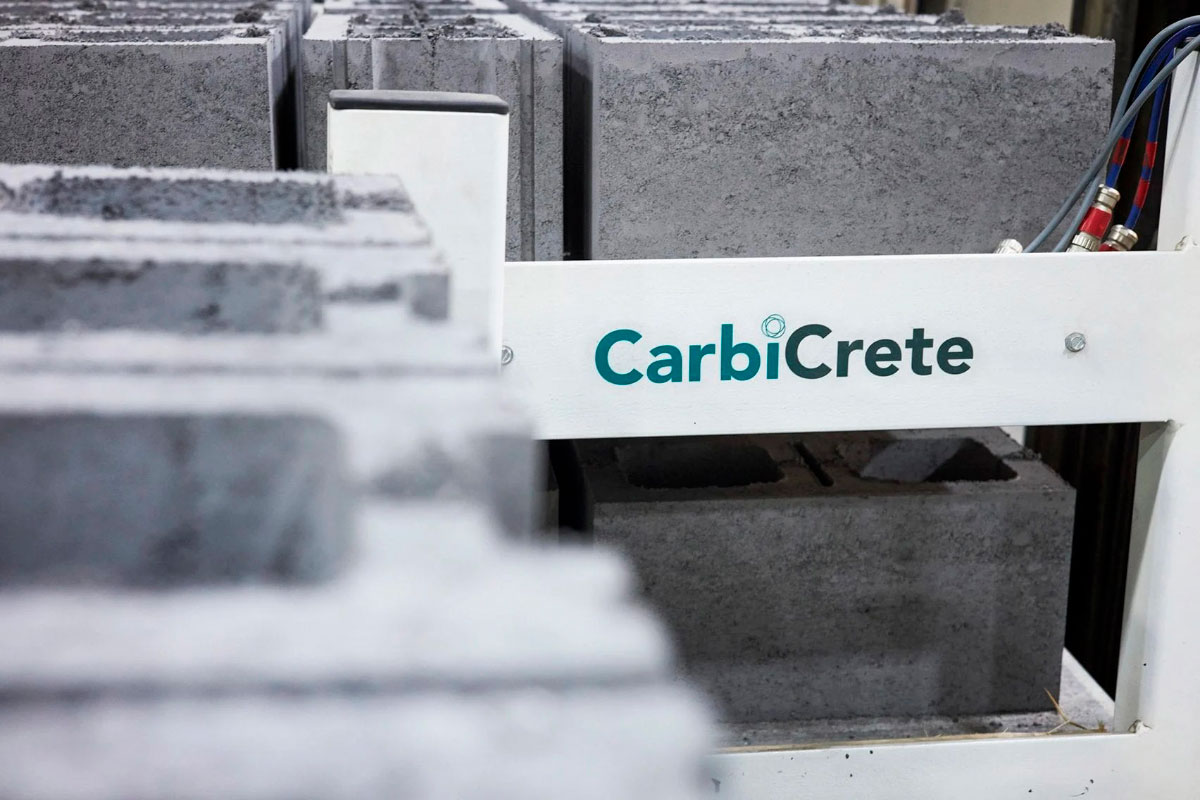Concrete and cement are among the most consumed products in the world, along with water, and their manufacture accounts for 8% of global CO2 emissions. This reality has prompted the search for more environmentally-friendly concretes for use in architecture and construction. One of these new concretes is the so-called carbon-negative concrete, developed by CarbiCrete.
Instead of Portland cement, steel waste from the steel industry is used to manufacture this material. This first characteristic already drastically reduces CO2 emissions during production. But in addition, this waste, which is combined with water and aggregates, then goes through a process in which special machines inject it with CO2 from adjacent industries, to a greater extent than the CO2 emitted for its manufacture.
This last process, or curing of the material, which lasts only 24 hours, saves considerable time, as well as reducing the use of raw materials by between 10% and 20%. In addition, the elements manufactured with this concrete show an improvement of up to 30% in their resistance to compression and freezing.
The technology for the production of carbon-negative concrete is still under development. Although one of the objectives of the research is that it can be used in architecture and construction in the same way as ready-mixed concrete, directly on site, this material is restricted to the manufacture of prefabricated parts. Another challenge in its production is the supply of steel slag, as it is much less available globally than cement.
CarbiCrete licenses its technology to all interested precast producers. The company manages the CO2 absorption chamber and the tank for these producers, as well as providing them with the supply of steel slag. This development by CarbiCrete, with major financial support, promotes the circular economy and therefore represents a significant step forward in the search for ecological solutions in architecture and construction.
By Guillermo Ferrer, Senior Architect in Amusement Logic’s Architecture Dept.







